by Mickey Megistus,
This article is an attempt to reconcile a lot of esoteric/occult literature found in eastern and western forms of mysticism and cosmology, particularly Theosophical, Hermetic, Gnostic, Hindu and Buddhist studies. I also delve into alternative science, metaphysics and of course the Law of One material. Many issues of contention are based largely on semantics, and much (if not all) of the literature out there is detailing the same concepts (more or less), just categorized or named with minor differences.
What I have composed is a list of the seven major energy centers, or chakras, of the human being, how they correlate to the seven colors of the light spectrum, the seven subtle bodies of the aura, seven planes of being, seven qualities of existence, seven densities of consciousness (as referenced in the Law of One), and the seven Hermetic principles (as referenced in the Kybalion). As part of doing the proper “inner-work” that includes anchoring higher energies into the lower, I’ve found it very beneficial to contemplate these seven basic levels, their inherent ideas, and how they work together. We are multidimensional beings after all, so I thought it would be pertinent to explore our varying dimensions.
[the_ad_group id=”3131″]
Note: Though each energy center correlates to specific attributes, these attributes are not exclusive to each center, but rather, are just areas of focus, as they are all part of an inter-functioning whole. While initially creation was likely a top-down manifestation I thought we could start from the bottom-up instead, since most of my chakra exercises begin this way.
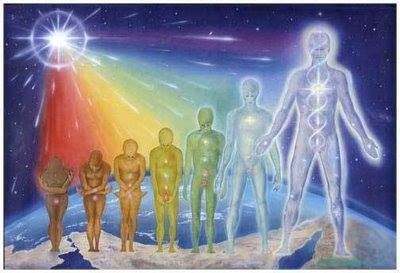
First is the root center, located at the base of the pelvis, which correlates to the physical body and extends outward to the material plane. Its color is red, which corresponds to the lowest hue of the light spectrum. The root center is what brings our consciousness down from the higher planes and anchors us into physicality; it possesses the deterministic quality of matter, ruled by the elemental forces and the chemical/mechanical processes of first density. According to Reciprocal Systems Theory by Dewey Larson (Larsonian Physics is also referenced in the Law of One) we could call this three-dimensional physical reality “space-time,” where phenomena operates below the speed of light.
Related The Law of One vs History and Religion: Yahweh, Moses, Akhenaten and the Martian Hyksos Theory
The Hermetic principle best associated with the root center is vibration. From the highest, purest and formless state of spirit, down to the basest and most condensed form of matter, all is in vibration—the higher the vibration, the higher the position in the scale. The vibration of spirit is of such immeasurable speed that it appears at rest—just as a fast spinning wheel seems to be motionless. And equally so, the vibration of matter is of such impossible slowness it appears at rest. But nothing is truly at rest. All is in motion. And between the extremes of spirit and matter, there are countless fluctuating degrees of vibration.
Second is the sacral center, located just below the navel. Its color is orange. This center correlates to the etheric body, which then extends outward to the etheric plane. This is what brings life-force, prana or chi into your physical vehicle, permitting vitality and growth, thus the sacral center possesses the quality of life, which is the primary theme of second density. The etheric plane can be seen as the energetic, ethereal reality that fashions material existence. Everything that exists on the material plane is like a physical shadow that is cast from the etheric. That is not to say all things etheric are also physical, but rather, all that is physical comes from the etheric first, including light and life (much like the concept of bio-photons). There are many things on the etheric plane that we cannot perceive with our physical senses, yet they exist nonetheless. We could even deduce that the energy centers of the human being are not actually localized in the physical body, but in the etheric and astral body.
The Hermetic principle best associated with the sacral center is gender, which manifests in everything. Always, the masculine and feminine aspects are at work. Everything, and every person, contains these two aspects. Every male also contains a portion of the feminine aspect; every female also contains a portion of the masculine aspect. On the material plane, this principle manifests as sex, on the higher planes, it takes higher forms, but the principle is ever the same, and works ever in the direction of growth, allowing generation and regeneration. No creation, physical, etheric, astral or spiritual, is possible without this principle.
Buy Book Compendium Of The Emerald Tablets by Billy Carson
[the_ad_group id=”3115″]
Third is the solar plexus center, located at the base of the sternum, its color is yellow. It is associated with the astral body, extending into the beginnings of the astral plane, where energies and consciousness begin to turn inward—to the world within us. This is where one becomes conscious of their individualized expression, identifying with their passions, desires, feelings, ideas and relationships with others, thus, they start learning the quality of self, the central theme of third density.
We could assert at this point that the inner-world (also referred to as the inner-planes in the Law of One) is where phenomena begins to operate above the speed of light, and so we move from the physical reality of “space-time” into the metaphysical reality of “time-space.” In cases of remote viewing or astral projection, we see that deep, focused meditation and dreaming allows the astral body to leave the physical body and explore the material, etheric and astral environments because the astral body exists in a higher state beyond the fixed locality of space-time. In the Law of One, Ra explains that the inner-planes of time-space also function as an afterlife and review process for souls amid incarnations.
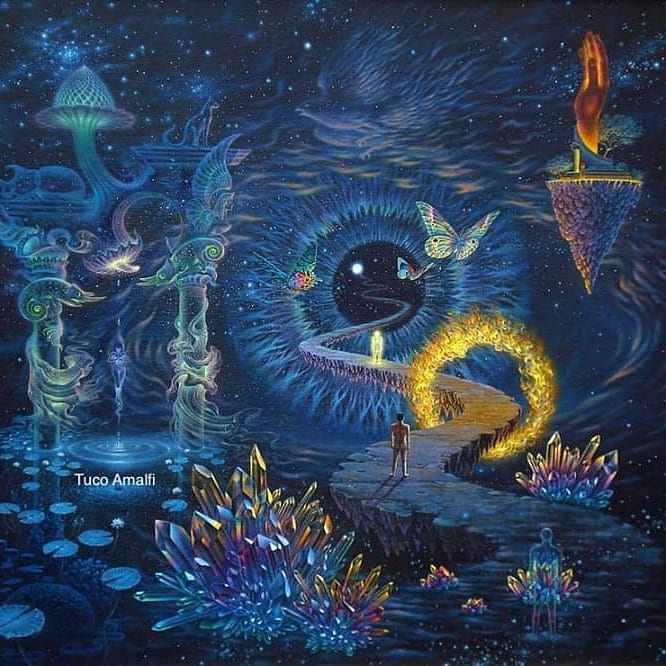
The Hermetic principle of the plexus center is polarity. This principle embodies the truth that everything is dualistic; everything has two poles, a pair of opposites. Thesis and antithesis are identical in nature, but different only in degree, opposites are the same, opposites may be reconciled; extremes eventually meet. In the Law of One, Ra often mentions that the choice to embrace either the positive moral polarity of service-to-others or the negative moral polarity of service-to-self is made in third density, which is another reason why the principle of polarity seems the most fitting for the plexus center.
If we take Walter Russell’s Electric Universe Theory into account, the principles of gender and polarity also express themselves in the energy centers electromagnetically through varying degrees of positive and negative charge/discharge. Our energy centers alternate from electric to magnetic potentials. The 1, 3, 5, 7 chakra line (root, plexus, throat, crown) are divine masculine/electrically dominant and the 2, 4, 6 chakra line (sacral, heart, third-eye) are divine feminine/magnetically dominant. The masculine is thinking/intellectual, and the feminine is feeling/intuitive.
A litany of dichotomies express the intertwined nature of gender and polarity, including the left (m) and right (f) hemispheres of the brain, the conscious (m) and unconscious (f), light (m) and dark (f), and even space-time (m) and time-space (f). Obviously, this is an oversimplification when dealing with any pair of opposites, because you will have either side of the polarity containing both the masculine and feminine aspects simultaneously, just as either gender contains both poles simultaneously.
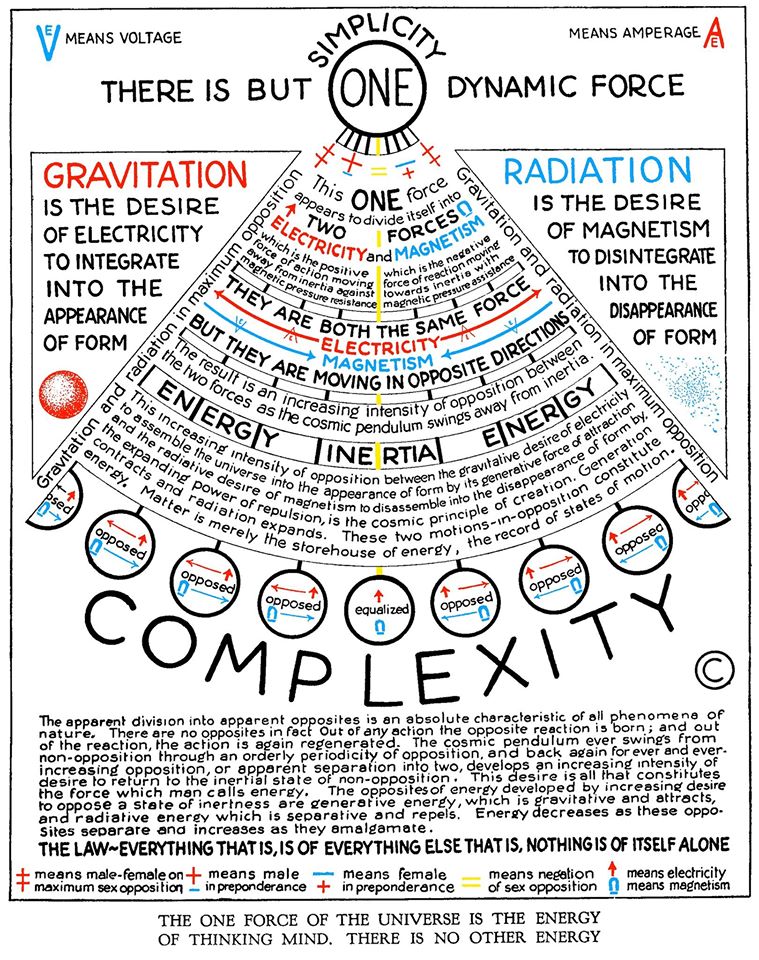
This complements Yin-Yang philosophies (found in Taoism, Qi Gong, Tai Chi, I Ching, etc.) where you have the positive or masculine Yang principle and the negative or feminine Yin principle. Meridians interlink the energy centers by way of a Yin-Yang coupling effect, forming seats for the lower, middle and higher “brains” (gut, heart, head) and their sources of life/spirit, also known as lower, middle and upper dantians (or dan tien). If we regard the energy centers as a three-fold system of body-mind-spirit, then we can view three distinct groupings: the root, sacral and plexus (body), heart and throat (mind), and the third-eye and crown (spirit).
The classical elements are depicted as either right-side-up or upside-down triangles to denote their masculine or feminine aspects. When a triangle is right-side-up, it can represent the divine masculine, and while this aspect has a transmissive (active) and electric-like nature, it also has a centripetal dynamic, spiraling inward (gravitating) to a central point. Conversely, when a triangle is upside-down, it illustrates the divine feminine; this aspect has a receptive (passive) and magnetic-like nature, yet also a centrifugal dynamic, spiraling outward (radiating) from a central point. Triangles are used in creating some platonic solids as well, particularly the tetrahedron (fire), octahedron (air) and icosahedron (water).

Furthermore, when dealing with Tarot, Astrology and other forms of divination, the nature of thought can be associated with electricity and the element Air, whereas the nature of emotion can be associated with magnetism and the element Water. And likewise, the nature of action can be associated with electricity and the element Fire, while the nature of stillness can be associated with magnetism and the element Earth. Thought, Emotion, Action, Stillness = Air, Water, Fire, Earth. The union of electro-gravitic and magneto-radiant forces creates what is known as a torsion field, and this is depicted symbolically in ancient works as the six-pointed star, or, the star tetrahedron (merkaba).
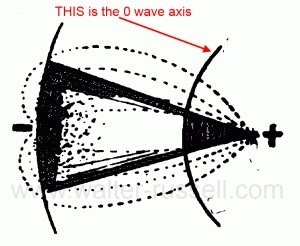
Fourth is the heart center, located at the middle of the chest, its color is green and correlates with the emotional body, extending into the emotional plane, which is a more refined aspect of the astral. The heart center’s primary focus is cultivating the quality of soul. This quality is the first of true understanding, deepening one’s desires, feelings and relationships from the world of the transitory into the world of the eternal. Its themes of love, compassion and acceptance are reminiscent of fourth density. Its Hermetic principle is rhythm. This principle embodies the truth that in everything there is manifested a measured motion, to and fro; an ebb and flow; a swing backward and forward; a pendulum-like movement; a wax and wane, high-tide and low-tide; movement between the two poles or aspects, which exist in accordance with the principles of gender and polarity.
Fifth is the throat center, located below the trachea at the collarbone. Its color is blue and correlates with the mental body, which extends to the mental plane. Its focus is on communicating the language of thought, developing archetypal symbols and abstract concepts which ultimately create a framework. This framework possesses the quality of mind (not so much “mind” as consciousness itself, but more so as a construct through which consciousness may express itself, namely the holographic and fractal nature of reality), and is the next level of understanding and astral refinement. The themes of light and wisdom are that of fifth density.
[the_ad_group id=”3116″]
Its Hermetic principle is correspondence, conveying the truth that there is always a correspondence between the laws and phenomena of the various planes of being and qualities of existence. This principle gives one the means of solving many mysteries and hidden secrets of the universe. There can be planes and qualities beyond our knowing, but when we apply this principle, we are able to glean knowledge that would otherwise be unknowable to us. The axiom of this principle is the most notable. It states: as above, so below; as within, so without.
Sixth is the third-eye center, located just above the brow. Its color is indigo and it correlates with the causal body, extending into the causal plane. This plane functions as the upper-boundary between the astral and the spiritual, the highest level of refinement. It is where all thoughts and concepts come into being, and what makes manifestation possible. The causal body generally acts as the final veil for the innermost self or Atman (a concept in Hindu philosophy analogous to the “higher self” discussed in the Law of One). Higher self or Atman resides in sixth density, where the moral polarities of service-to-others and service-to-self have been reconciled, or brought into unity. Its quality is will, or the true will of the adept (willpower aligned with unity consciousness, the theme of sixth density). Its primary focus is taking the infinite potential of consciousness and setting it into motion.
Its Hermetic principle is causation or causality (cause and effect or karma). Every cause has an effect, and every effect has a cause. Everything happens according to this law; chance is but a name for law not recognized. Causality affects all planes, and nothing truly escapes its will. The masses of people are carried along by wills more dominant than their own, subject to their environment, heredity and external suggestion; moving them about like pawns on a board. But a master’s willpower merges with the causal plane itself, and thus to master one’s thoughts, emotions, actions and environment means becoming causers instead of the effects, movers instead of pawns.
The seventh is known as the crown center, located at the top of the head. Its color is violet and it correlates with the spiritual body, extending to the spiritual plane. This is the sanctum of pure sentience or awareness. The source intelligence behind creation, the seat of our transcendental self (analogous to Anatta or non-self in Buddhist philosophy). It possesses the non-deterministic quality of spirit, and its all-encompassing totality of freedom is the central characteristic of seventh density. It is all as one. The unifying essence and undifferentiated absolute, or as Ra would call it, intelligent infinity.
Its Hermetic principle is known as mentalism in the Kybalion, but to avoid confusion with the mental body and plane, we can refer to it as consciousness in its infinite, absolute state (referred to as an infinite living mind in the Kybalion). This principle embodies the truth that spirit is at the very core of consciousness. It is what makes our compassion and conscious awareness possible. It is the eternal “I am” principle. Spirit, in its most realized state (formlessness), is unknowable and undefinable by our current level of perception, but may be considered omnipresent and infinite, expressed in all things either internally or externally. And similar to the magical or alchemical ouroboros, the serpent/dragon eating its own tail, the seventh color of violet returns to the first color of red, thus completing the circle, or enclosing the octave. The omega becomes the alpha once again.

Ironically, word “ego” in Latin translates roughly to the concept of “I” or the “I am” principle inherent with self-awareness. Notwithstanding the negative connotation associated with the modern-day concept, the ego is still an irrevocably fixed and unavoidably influential aspect of our existence. Ego has been largely defined as:
A conglomeration of recurring thought-forms and conditioned mental-emotional patterns that are invested with a sense of I, a sense of self.
And rightly so, for a sense of I, a sense of self, can have many parts and many levels (as I have already outlined in detail), but a problem arises when we arbitrarily confine ego to only a certain part or level of understanding, which is why most people resort to developing a negative association with the term.
The “I am” principle of the ego comes back to the idea that a human being is a multidimensional being, our “body” having a seven-fold (septenate) nature composed of seven energy centers or chakras, each one endowed with its own limited awareness and sense of identity within the whole. And when a person makes their way through the long awakening process of spiritual evolution, these centers grow to observe and interact with each other, creating a totality of consciousness greater than the sum of its parts.
So in truth, it is as Gurdjieff and others have said, you have multiple “I’s” within your being and some of these “I’s” speak louder than others, depending our tendencies, habits, interests and other types of distortions or blockages we still have to work through (which can take many reincarnative lifetimes).
The lower three centers attributed to form (root, sacral, plexus) is where most of humanity is located. The further down the centers go, the more they orient themselves with the mechanical, biological urges and instinctual drives of the physical body as well as the deterministic, entropic qualities of matter. This is what we might term as the “baser” self, and the ego bound to the baser self is what we might term as the lower ego.
[the_ad_group id=”3117″]
This concept of the lower ego is what most people associate with. However, as the energy centers climb higher, the more they orient themselves with divine, eternal ideas and principles, as well as the non-deterministic, syntropic (or negentropic) qualities of spirit. The ego bound to the spirit is what we might call the higher ego or more commonly, the higher self.
In a way, the concept of “soul” provides us with the higher ego, and functions as a metaphysical (time-space) vehicle for our spirit over numerous incarnations in much the same way our bodily flesh provides us with the lower ego, and functions as a physical (space-time) vehicle for a single lifetime. While our physical body is comprised of material and etheric components, our soul is comprised of astral components such as the emotional body, mental body and causal body.
Rudolf Steiner does a great job elaborating on his understanding of the soul in Chapter 2 of his book, “Theosophy”:
Our souls live in the present, although this life in the present is not independent of our previous lives, since each incarnating spirit brings its destiny along with it from previous incarnations, and this destiny determines its present life. What impressions our souls will be capable of receiving, which of our desires can be fulfilled, what joys and sorrows will be our lot, what other human beings we will meet—all this depends on what our actions were like in earlier incarnations of the spirit.
People to whom our souls were connected in one lifetime will necessarily encounter us again in a later one, because the actions that took place between us must have their consequences. Souls that have once been associated will venture into reincarnation at the same time. Thus, the life of the soul is a product of the spirit’s self-created destiny. The course of a human life within the framework of life and death is determined in three different ways, and we are also therefore dependent on three factors that go beyond birth and death.
The body is subject to the laws of heredity; the soul is subject to self-created destiny or, to use an ancient term, to its karma; and the spirit is subject to the laws of reincarnation or repeated earthly lives. The interrelationship of body, soul and spirit can also be expressed as follows: The spirit is immortal; birth and death govern our bodily existence in accordance with the laws of the physical world; and the life of the soul, which is subject to destiny, mediates between body and spirit during the course of an earthly life.
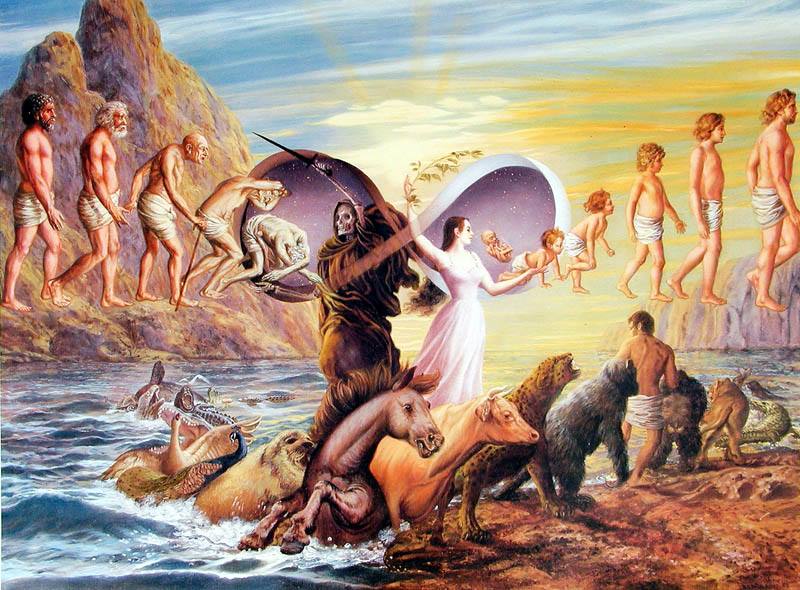
The lower triad of root, sacral and plexus is where most of the inner-work is being done in third density. Of course, inner-work can be done on the higher centers, but this does not imply that the average person working on their heart center will immediately proceed to fourth density, nor does working on the throat center immediately lead to fifth density, rather, it implies that the energy centers exist as sub-densities, just as the densities themselves exist as sub-octaves of the creational octave of our local solar logos (sun). And in turn, each solar logos is actually a sub-logos of our galactic logos, just as each galactic logos is also a sub-logos of the universal logos. So, in point of fact, third-density humanity and this planet can be seen as a sort of “sub-sub-sub-logos” of the universe. This “nesting” phenomena is part of how the fractal and holographic nature of reality works.
Buy Books Dolores Cannon’s Work: Reincarnation of ET Souls on Earth for a Divine Purpose

From the lower to higher centers, our sense of identity spans ever inward and outward, from the unconscious/bodily (root), personal (sacral) and interpersonal/social (plexus), up towards the transpersonal (heart), archetypal/abstract (throat), universal (third-eye) and finally the transcendental self (crown).
As your sense of identity ascends to greater and greater levels of awareness, the illusions of separation and individualization grow weaker and weaker until at long last you realize you are all things, both the Creator and the Creation. And knowing that you are “all that is” still results in identifying with “all there is” because at the very core of consciousness—at the very core of spirit—is the eternal “I am” principle of the One and Infinite Creator (God).
Now, to completely rid oneself of ego or identity is quite a feat, as identity and beingness are, in many respects, inseparable. So in theory, to truly leave such things behind would mean exiting or ceasing the Creation altogether. And without the Creation, would the Creator cease to know itself, and thus, cease to be? This leads us to wonder if the One and Infinite Creator can exist apart from its Creation or not. Quite the quandary. I wouldn’t hazard a guess at which could be true. Paradoxically speaking, they could both be true, but I digress…
Buy Orgonite Cell Phone Protector (Helps Negate Harmful Radiation)
I’m reminded of a passage by Theosophist Annie Besant who illustrated the differences between the Occultist and the Mystic:
The Occultist and the Mystic differ in their methods as well as in their object. The Occultist seeks knowledge of God; the Mystic seeks union with God. The Occultist uses Intellect; the Mystic Emotion (or Intuition). The Occultist watches Ideas embodying themselves in phenomena; the Mystic unfolds the Divine within him that it may expand into the Divinity whose Body is a universe.
These sharp-cut definitions are, of course, true only of abstract types; the concrete individuals shade off into each other, and the perfected Occultist finally includes the Mystic; the perfected Mystic finally includes the Occultist. But on the way to perfection, the Occultist must evolve, pari passu, his consciousness and the successive vehicles in which that consciousness works, while the Mystic sinks into the depths of his consciousness, and cares naught for the bodies which he disregards and abandons.
To borrow two well-known terms: the Occultist tends to become the Jîvanmukta, the liberated Spirit residing in material bodies; the Mystic tends to become the Jîvanmukta, the liberated Bodiless One. The Occultists rise, grade by grade, through the Hierarchy; the Mystics become the Nirmãnakãyas, the Reservoir of Spirituality, from which are drawn the streams which irrigate the worlds. Blessed, holy and necessary are both types, the two Hands of the One LOGOS in His helping of His universe.
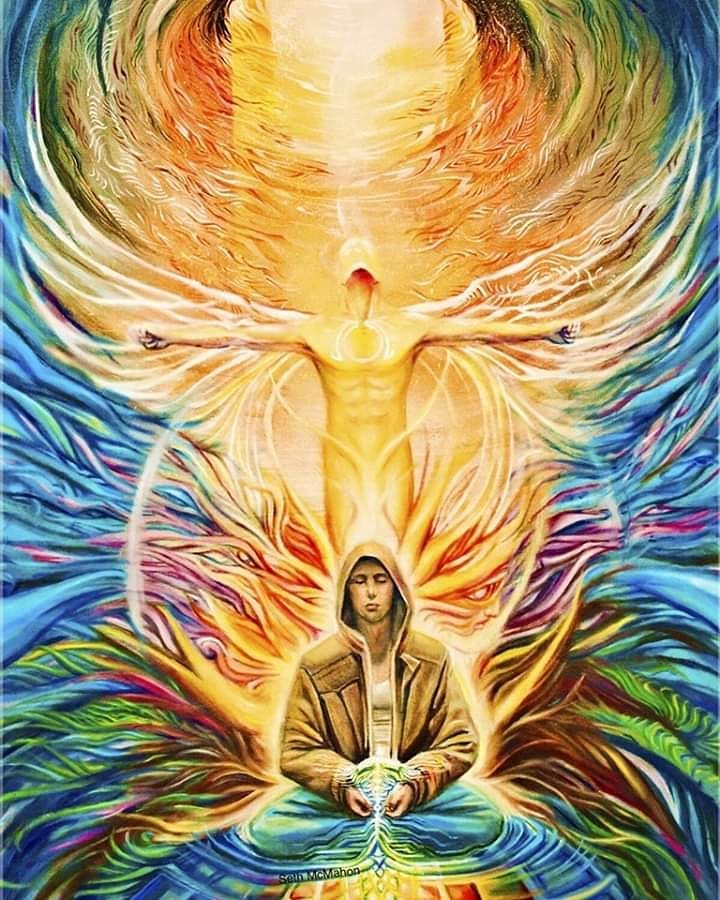
A little mantra I use when going through all seven energy centers, I identify them by their relation and quality. First from bottom to top, then from top to bottom:
Matter is the foundation for Life,
Life is the foundation for Self,
Self is the foundation for Soul,
Soul is the foundation for Mind,
Mind is the foundation for Will,
Will is the foundation for Spirit,
Spirit is the master of Will,
Will is the master of Mind,
Mind is the master of Soul,
Soul is the master of Self,
Self is the master of Life,
Life is the master of Matter.
Thanks again for reading my musings; I’d like to end things with final passage from L.W. de Laurence in his book entitled, “Mystic Test Book of The Hindu Occult Chambers”:
This power of spiritual perception, potentially contained in every man, but developed in few, is almost unknown to the guardians of science in our Western countries of modern civilization, because learning is often separated from wisdom and the inner or Spirit Sight, and the calculating intellect seeking for worms in the dark caverns of the earth cannot see the genius that floats toward the light and it cannot realize his existence.
And yet this ancient science (Occultism), which the modern ignore, is as old as the world. It was known to the ancient prophets, to the Arhats and Rishis of the East; to initiated Brahmins, Egyptians, and Greeks, and the Hindu Sages. Its fundamental doctrines are found in the Hindu Vedas and the Sacred Books of the East. Upon these secret doctrines rest the fundaments of the religions and secret orders of the world. They formed the essence of the secrets that were revealed only to the initiated in the inner temple, where the ancient mysteries were taught, and whose disclosure to the vulgar was forbidden under the penalty of torture and death. They were secrets known to the ancient sages and to the Hindu Adepts and Rosicrucians of the Middle Ages, and upon a partial understanding of their truths rests the system of modern Freemasonry.
They are not to be confounded with speculative philosophy, that reasons from the known to that which it cannot know, trying by the flickering light of logic and orthodoxy to grope its way into the darkness, and to feel the objects which it cannot see. These doctrines were taught by the seers of old who possessed spiritual power and the inner sight to see. Such men were the great religious reformers of all ages, from Confucius and Zoroaster down to Jacob Boehme and Eckartshausen, and their teachings have been verified by everyone whose purity of mind and whose power of intellect have enabled him to see and to understand the things of the spirit (God).
Buy Carbon 60 (c60) Super Antioxidant, Anti-Aging, Youth Restoring Supplements and Products
[the_ad_group id=”3113″]
Some of their doctrines refer to morals and ethics, others are of a purely scientific character; but both aspects of their teachings are intimately connected together, because beauty cannot be separated from truth. They both form the two pages of a leaf in the book of universal Nature, whose understanding confers upon the reader not merely opinions, but knowledge, and renders him not only learned, but illuminated with wisdom and Spirit-Sight-At-Will.
Among those who have taught the moral aspect of the secret doctrine there are none greater than Buddha, Plato, and Jesus of Nazareth; of those who have taught its scientific aspect there have been none more profound than Hermes Trismegistus, Pythagoras, and Paracelsus. They obtained their knowledge not merely from following the prescribed methods of learning, or by accepting the opinions of the “recognized authorities” of ”their times,” but they studied nature by her own light, and learned the lesson ”Know Thyself,” and they became lights themselves, whose rays illuminate the world of mind. What they taught has been to a certain extent verified and amplified by the teachings of Eastern Adepts (Yoghis), and Hierophants of the Orient.”
Thanks for reading.
The preceding is a Stillness in the Storm original creation. Please share freely.
Like our work? Support this site with a contribution via Paypal, cryptocurrencies, or P
This article appeared first on Stillness in the Storm.
About The Author
Self-proclaimed pantheist, anarchist and occultist, Mickey Megistus is an eclectic researcher with a passion for truth and the liberation of humanity. He is an avid proponent of using knowledge, compassion and wisdom to raise our collective consciousness through a blend of alternative science, eastern and western mysticism, and metaphysical practices.
This article (The Holy Septenate: Understanding the Divine Seven-fold Nature of Our Being and Reality) originally appeared on StillnessintheStorm.com and is free and open source. You have permission to share or republish this article in full so long as attribution to the author and stillnessinthestorm.com
Stillness in the Storm Editor: Why did we post this?
Self-knowledge is vitally important for a healthy and fulfilling life. Unlike our animal cousins, human beings possess a mind capable of intellectual and rational thought. We have the ability to observe things in reality and develop models of understanding that we can use to do things we desire. The preceding article offers self-knowledge that is important for a productive life. With the power of how your being works in hand, you can avoid hazards and embrace opportunities, even manifesting potentials that some would consider superhuman. Furthermore, the meta-skill of self-discovery enhances the skill of learning in general. By gaining knowledge of self you prepare the mind for all other knowledge. The quest for self-mastery, enlightenment, and true sovereignty begins with the faith grasp that you can know these things, the epicenter of which, is your knowledge of self.
– Justin
Not sure how to make sense of this? Want to learn how to discern like a pro? Read this essential guide to discernment, analysis of claims, and understanding the truth in a world of deception: 4 Key Steps of Discernment – Advanced Truth-Seeking Tools.
Stillness in the Storm Editor’s note: Did you find a spelling error or grammar mistake? Send an email to corrections@stillnessinthestorm.com, with the error and suggested correction, along with the headline and url. Do you think this article needs an update? Or do you just have some feedback? Send us an email at sitsshow@gmail.com. Thank you for reading.
Source:
Embedded Throughout this Article
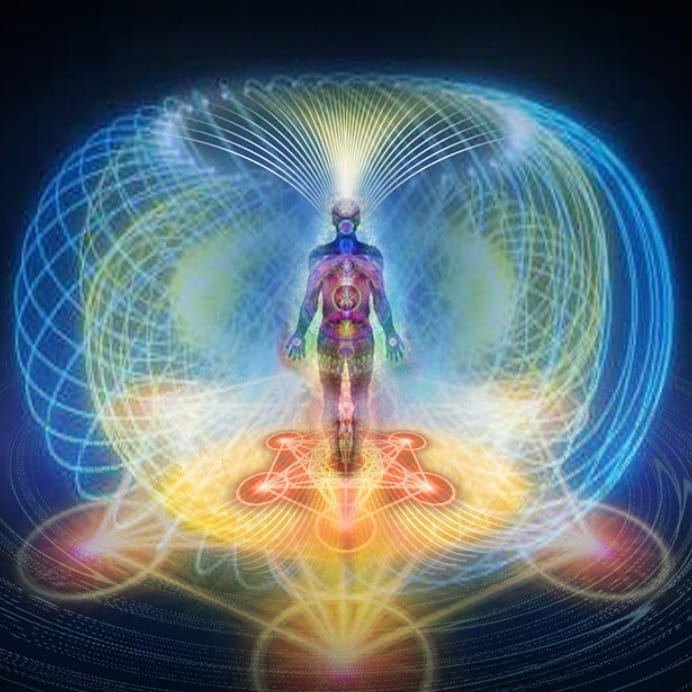
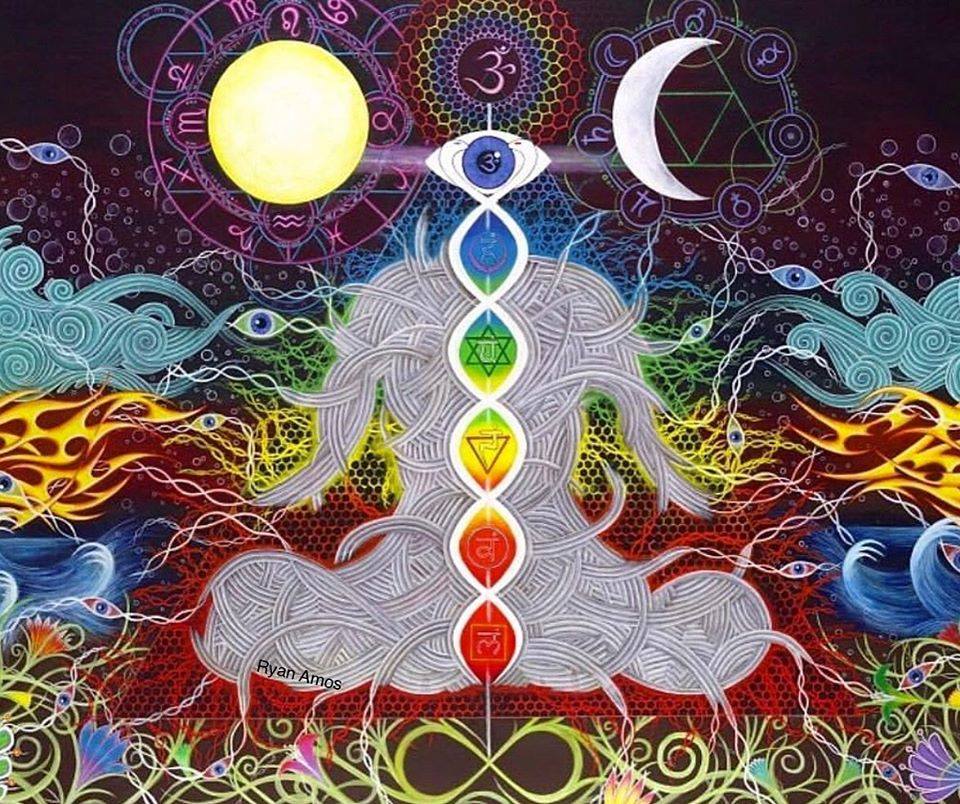
If you look in depth into Islam, mainly the teachings of Islamic Sufis like Rumi and Hafez, and the Koran you’ll realize that it’s not just Buddha, Plato, and Jesus of Nazareth, it’s much more infinite. I’m not getting on a bandwagon ,mind you. If it is about disseminating knowledge you can’t have biases and prejudicial mind sets. You need to expose the whole truth.
The law of one was brought forth by the prophet Mohammad fifteen hundred years ago, now it appears suddenly as some sort of new age popular concept!!….. It is the fundamental principle of Islam!!
And many other religions, not just Islam. If there truly is one God, would not all instances of worship reflect the one truth of this one god?
Well just so its clear, that quote was just naming a few examples. I’m sure there’s plenty of Sufi mystics that could have been mentioned, but I didn’t write that last excerpt, it was D.W. de Laurence that wrote it back in 1909. And yes, even in the Law of One, Ra mentions that people really didn’t start embracing the concept of monotheism or a singular Infinite Creator until Muhammad introduced Islam. I don’t think there was any biases in what was written simply because it wasn’t mentioned. I didn’t mention Druidic, Celtic or Norse mythology either, despite their knowledge of metaphysics. This was more about time and text constraints more than anything else.
A worthy and inspiring article. Thank you to Mickey Magistus.
Very pleased that you enjoyed it, Thanks for the compliment.